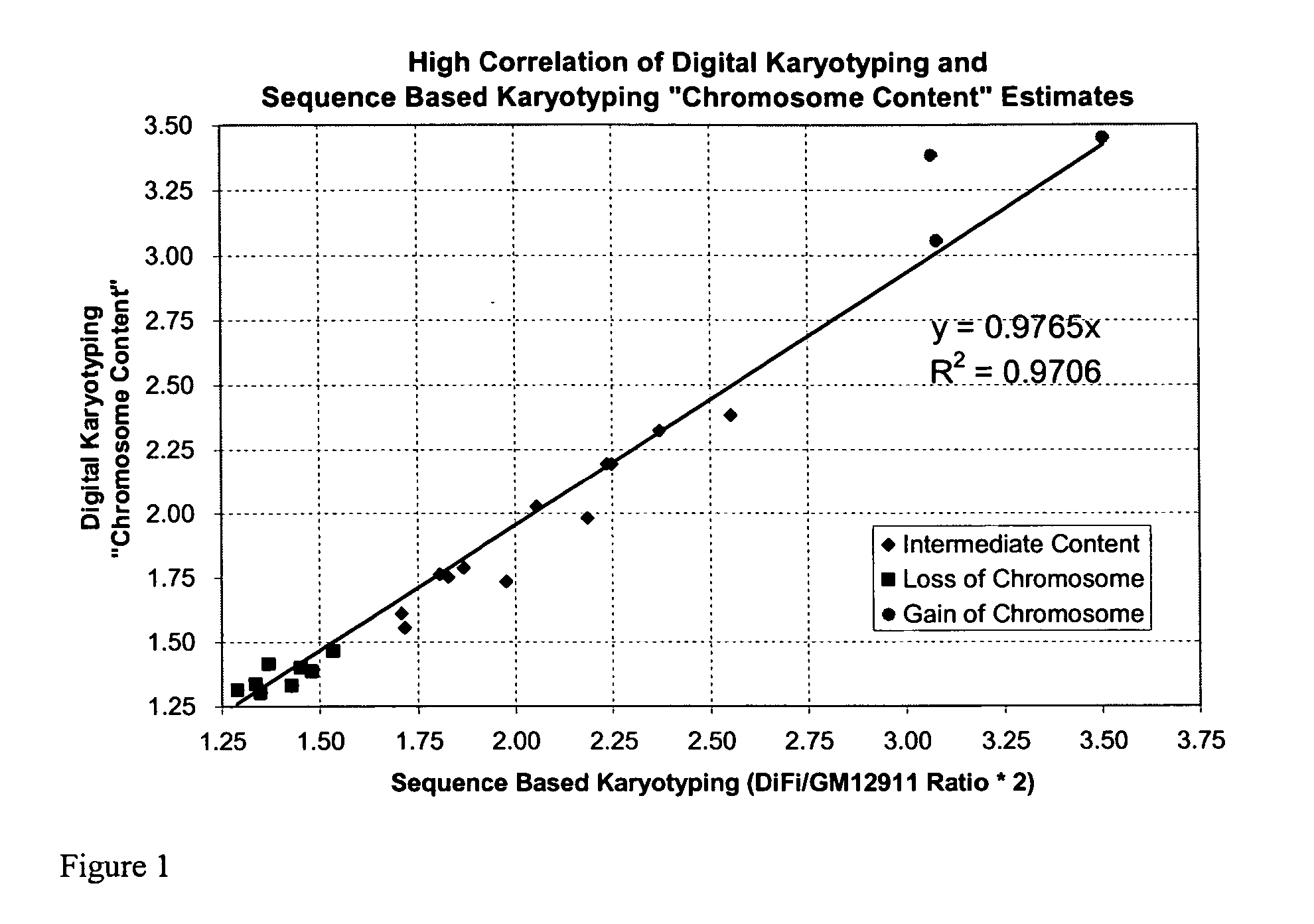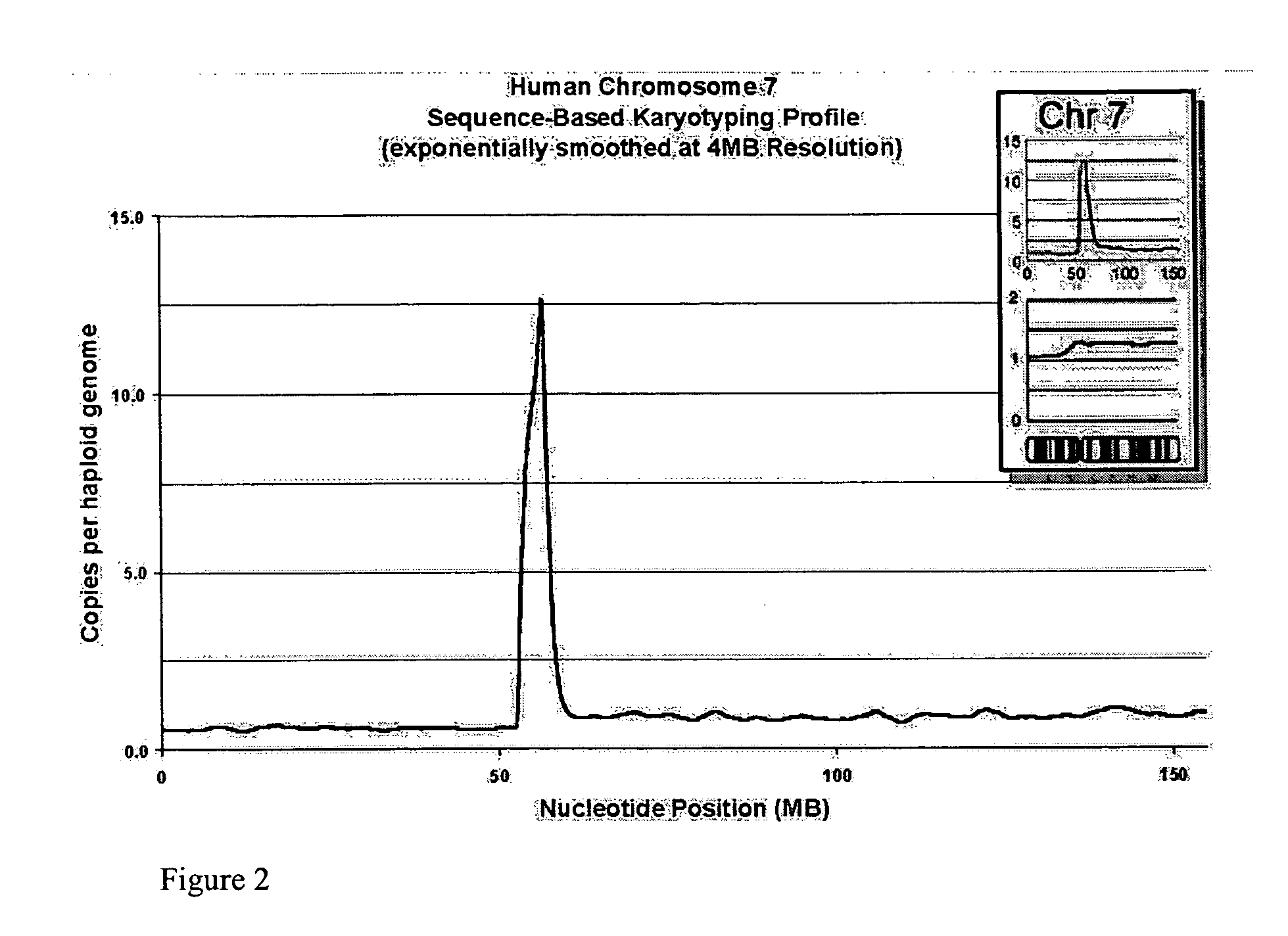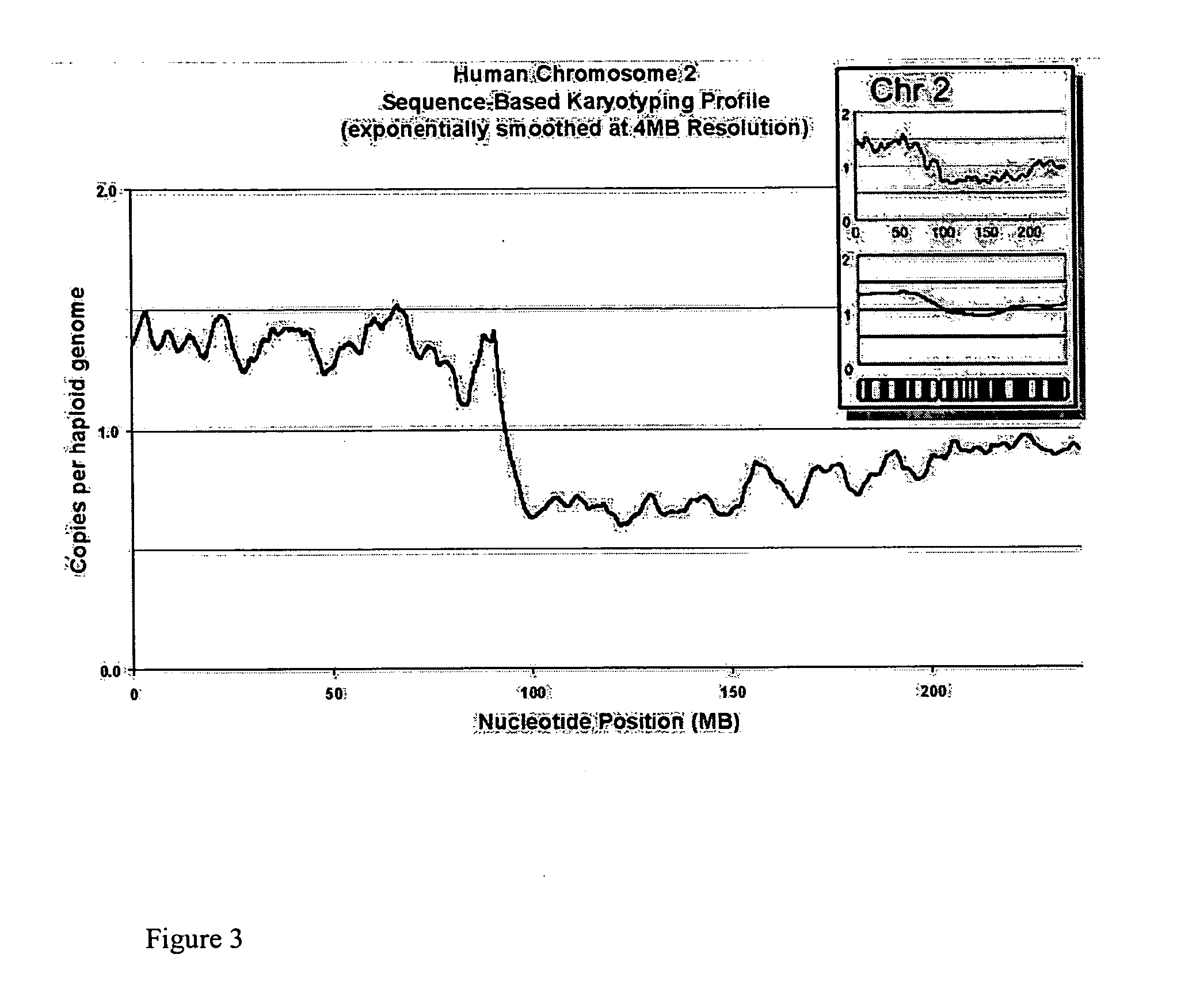Sequence-based karyotyping
a karyotype and sequence-based technology, applied in the field of gene therapy, can solve the problems of limited ability to resolve detailed mutations (involving only a small part of a chromosome) and cannot be used to detect smaller alterations
- Summary
- Abstract
- Description
- Claims
- Application Information
AI Technical Summary
Benefits of technology
Problems solved by technology
Method used
Image
Examples
example 1
Principles of Sequence-Based Karyotyping
[0246] The sensitivity and specificity of Sequence-Based Karyotyping in detecting genome-wide changes was expected to depend on several factors. The breadth of the region of amplification or deletion and the magnitude of the change in copy number of a given genomic event will directly effect the detection of the change.
[0247] Analysis of Whole Chromosomes
[0248] We attempted to determine whether any loss or gain of chromosomal content was present in DiFi cells that were detectable using Sequence-Based Karyotyping relative to the published findings by digital karyotyping. Briefly, all the DNA sequences obtained were mapped to a genomic scaffold. Sequences that did not map to the genome, either due to incompleteness of the genomic scaffold or issues of sequencing quality, were removed from consideration. Filtering was also performed to remove DNA sequences which mapped to multiple genomic locations (within repeated sequences). Counts of the re...
example 2
Materials and Methods for Sequence-Based Karyotyping
[0257] Sequence-Based Karyotyping was performed on DNA from the DiFi colorectal cancer cell line, and from lymphoblastoid cells of a normal individual (GM1291 1, obtained from Coriell Cell Repositories, NJ). Genomic DNA was isolated using DNeasy or QIAamp DNA blood kits (Qiagen, Chatsworth, Calif.) using the manufacturers' protocols.
[0258] Briefly, DNA is fragmented and size fractionated. Fragments within a several hundred basepair size range are ligated to proprietary adapters to generate templates. These templates are suitable for subsequent PCR and sequencing reactions using the sequencing methods described in this disclosure (454 Life Sciences technology). The adapted templates are amplified using a proprietary oil-water emulsion PCR system. The amplified DNA molecules are then immobilized onto proprietary microscopic beads and collected. The beads containing amplified DNA are subsequently segregated from non-DNA containing b...
example 4
Preparation of DNA Sample For Sequence-Based Karyotyping
[0271] DNA Sample:
[0272] Step 1: DNase I Digestion
[0273] DNA was obtained and prepared to a concentration of 0.3 mg / ml in Tris-HCl (10 mM, pH 7-8). A total of 134 μl of DNA (15 μg) was needed for this preparation. It is recommended to not use DNA preparations diluted with buffers containing EDTA (i.e., TE, Tris / EDTA).
[0274] In a 0.2 ml tube, DNase I Buffer, comprising 50 μl Tris pH 7.5 (1M), 10 μl MnCl2 (1M), 1 μl BSA (100 mg / ml), and 39 μl water was prepared.
[0275] In a separate 0.2 ml tube, 15 μl of DNase I Buffer and 1.5 μl of DNase I (1 U / ml) was added. The reaction tube was placed in a thermal cycler set to 15° C.
[0276] The 134 μl of DNA (0.3 mg / ml) was added to the DNase I reaction tube placed in the thermal cycler set at 15° C. The lid was closed and the sample was incubated for exactly 1 minute. Following incubation, 50 μl of 50 mM EDTA was added to stop the enzyme digestion.
[0277] The digested DNA was purified b...
PUM
| Property | Measurement | Unit |
|---|---|---|
| Digital information | aaaaa | aaaaa |
| Digital information | aaaaa | aaaaa |
| Digital information | aaaaa | aaaaa |
Abstract
Description
Claims
Application Information
 Login to View More
Login to View More - R&D
- Intellectual Property
- Life Sciences
- Materials
- Tech Scout
- Unparalleled Data Quality
- Higher Quality Content
- 60% Fewer Hallucinations
Browse by: Latest US Patents, China's latest patents, Technical Efficacy Thesaurus, Application Domain, Technology Topic, Popular Technical Reports.
© 2025 PatSnap. All rights reserved.Legal|Privacy policy|Modern Slavery Act Transparency Statement|Sitemap|About US| Contact US: help@patsnap.com



